A Spiritual Retreat at Shaoguan Nanhua Temple: What to Expect
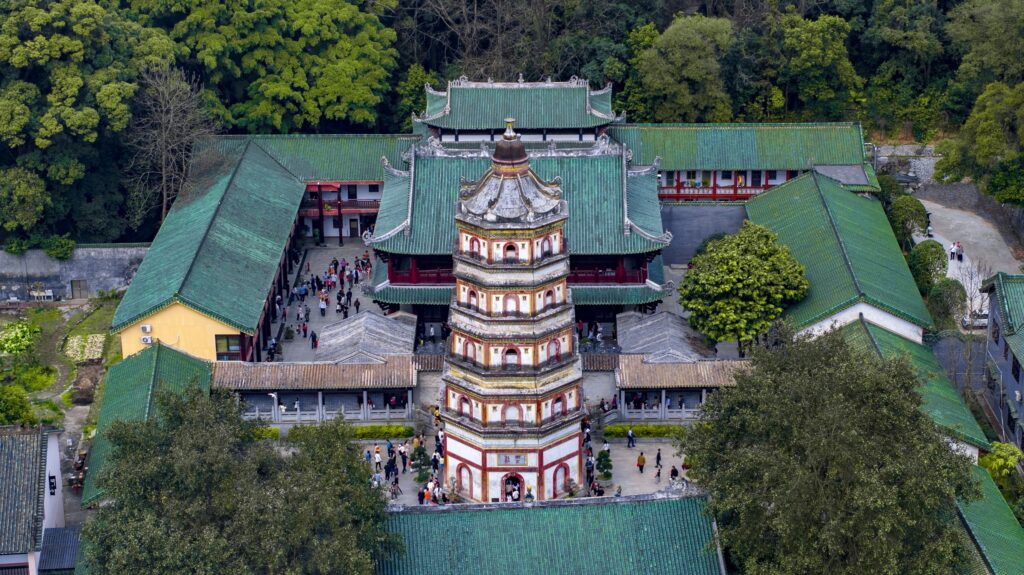
An Essential Guide to Visiting Shaoguan Nanhua Temple
Nestled in the tranquil embrace of the Caoxi River, Shaoguan Nanhua Temple stands as a testament to the rich tapestry of Chinese spirituality and history. As one of China’s most revered Buddhist temples, it draws pilgrims and travelers alike, offering a serene sanctuary where the past and present intertwine. Founded over a millennium ago, this sacred site is renowned not only for its stunning architecture but also for its deep connections to Zen Buddhism, particularly as the resting place of the revered Master Hui Neng, the sixth patriarch of Chan (Zen) Buddhism.
Upon entering the temple grounds, visitors are welcomed by lush greenery, ancient trees, and peaceful courtyards that create an atmosphere ripe for reflection and meditation. The intricate designs of the temple’s halls, adorned with striking golden Buddha statues and historical artifacts, invite awe and contemplation. Whether you’re seeking spiritual enlightenment, a moment of tranquility, or simply a deeper understanding of Buddhist culture, Shaoguan Nanhua Temple promises an enriching experience.
As you wander through this architectural masterpiece, each corner reveals a new layer of history and devotion, making it an essential stop for anyone traveling through this enchanting region of China. With its serene ambiance and breathtaking surroundings, the temple is not just a place of worship; it is a reflection of the enduring spirit of Zen Buddhism, inviting all who enter to pause, breathe, and connect with something greater.
In This Guide
- An Essential Guide to Visiting Shaoguan Nanhua Temple
- The Rich History and Legends of Shaoguan Nanhua Temple
- Main Highlights: What You Absolutely Can’t Miss
- Planning Your Visit: A Practical Guide
- Tickets: Prices, Booking, and Tips
- How to Get There: A Complete Transportation Guide
- Local Cuisine and Accommodation Nearby
- Frequently Asked Questions
- Final Thoughts on Your Trip
The Rich History and Legends of Shaoguan Nanhua Temple
Nestled along the serene banks of the Caoxi River, the Shaoguan Nanhua Temple, or Nanhua Buddhist Temple, stands as a testament to the rich tapestry of Chinese Buddhism. Founded during the Tang Dynasty in 596 AD, this sacred site is not only revered for its stunning architecture but also for its profound historical significance. It is recognized as the birthplace of Zen Buddhism in China, primarily due to its association with the sixth patriarch, Hui Neng, who is celebrated as a pivotal figure in the propagation of Zen teachings.
Hui Neng’s journey from humble beginnings to becoming a master of enlightenment is steeped in legend. It is said that he received the transmission of the Dharma from his predecessor, Hongren, while he was still a woodcutter, marking a transformative moment in the history of Buddhism. Under his influence, the temple flourished as a center of learning and meditation, attracting monks and practitioners from across the region.
Over the centuries, Nanhua Temple has undergone various renovations and expansions, reflecting the evolving styles of Chinese architecture. Its majestic halls, including the grand Mahavira Hall adorned with golden Buddha statues, showcase intricate carvings and vibrant colors that breathe life into its ancient walls. Each structure within the temple complex tells a story, echoing the devout practices and rituals of those who have walked its paths.
The temple is also home to a collection of priceless relics and artifacts, including Hui Neng’s preserved body, which adds to its sanctity and allure. Visitors often find themselves captivated by the tranquil atmosphere that envelops the grounds, where ancient trees and serene ponds create a peaceful escape from the hustle and bustle of modern life.
As a pilgrimage site, Nanhua Temple continues to draw Buddhist devotees and curious travelers alike, all eager to connect with the teachings of Zen Buddhism and the legacy of its great masters. Walking through the temple grounds, one can almost hear the whispers of history, inviting them to pause, reflect, and seek their own path to enlightenment amidst the echoes of the past.
In recent years, the temple has also embraced its role as a cultural heritage site, hosting various events and ceremonies that celebrate the teachings of Buddhism and foster community engagement. This ongoing commitment to preserving its history ensures that Nanhua Temple remains a living, breathing entity—one that cherishes its past while welcoming all who seek solace and inspiration within its sacred walls.
Whether you are a spiritual seeker, an architecture enthusiast, or a history buff, a visit to Shaoguan Nanhua Temple is an unforgettable journey through time, embodying the enduring spirit of Zen and the beauty of Chinese culture.
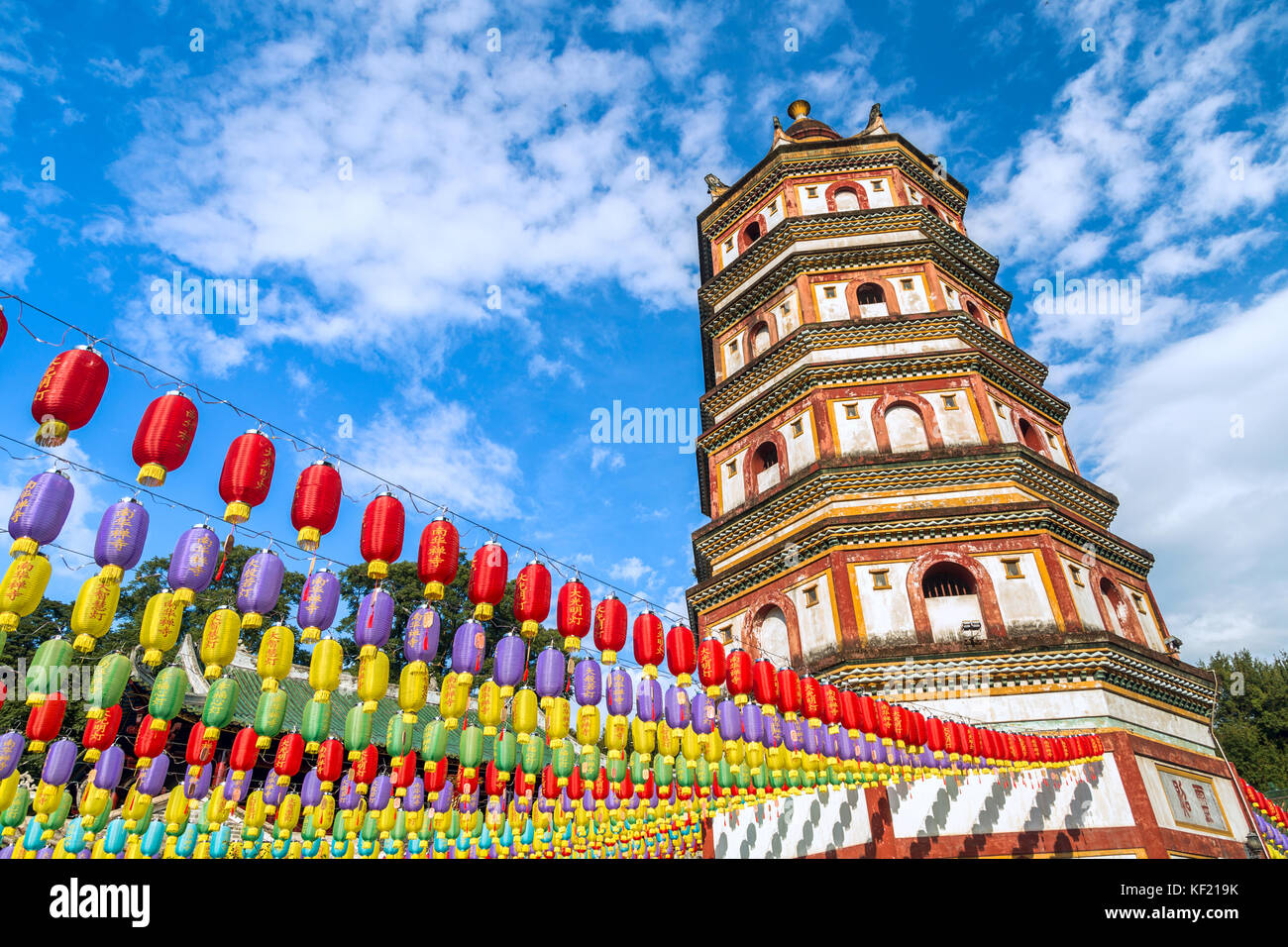
Shaoguan Nanhua Temple.
Main Highlights: What You Absolutely Can’t Miss
Visiting Shaoguan’s Nanhua Temple is an enriching experience that blends spiritual exploration and architectural beauty. Here’s a guide to the main highlights you absolutely can’t miss:
1. Mahavira Hall
Step into the heart of Nanhua Temple at the Mahavira Hall, where you’ll be greeted by the breathtaking sight of magnificent golden Buddha statues. This hall is not only a spiritual center but also a testament to the temple’s rich history and architectural prowess. Take a moment to soak in the serene atmosphere and reflect on the significance of Zen Buddhism in this revered space.
2. The Sacred Relics
One of the temple’s most notable features is the preserved relics of the Sixth Patriarch of Zen Buddhism, Hui Neng. As you wander through the temple grounds, be sure to pay your respects at the site housing these sacred remains. For many visitors, this is a profound moment that connects them deeply to the teachings of Zen Buddhism.
3. Lush Surroundings
Nanhua Temple is enveloped by stunning natural beauty. The temple grounds are adorned with ancient trees, serene ponds, and beautifully landscaped courtyards, creating a peaceful environment perfect for reflection and meditation. Don’t miss the opportunity to explore the pathways that wind through this tranquil oasis.
4. Historical Artifacts
As you explore the temple, you’ll encounter various ancient artifacts and relics that offer insight into the rich history of Buddhism in China. These items serve as a bridge to the past, allowing visitors to appreciate the cultural and spiritual significance of the temple.
5. Zen Meditation Areas
For those seeking tranquility, the temple boasts several designated meditation spots, particularly at the top of the hill near the stupa dedicated to Master Xu Yun. This area offers stunning views and an open space perfect for practicing mindfulness and meditation amidst nature.
6. Welcoming Monastic Atmosphere
Experience the warmth and hospitality of the temple’s monks and staff, who are dedicated to maintaining the temple’s peaceful ambiance. Their presence adds to the serene atmosphere, making your visit not just a sightseeing tour but a spiritual journey.
7. The Path to the Hot Springs
After exploring the temple, consider a short trek to the nearby Caoxi Hot Springs. This nearby attraction offers a relaxing experience and is a wonderful way to unwind after the spiritual immersion at Nanhua Temple.
8. Essential Tips
- Opening Hours: The temple is open daily from 7:30 AM to 5:30 PM, providing ample time to explore.
- Entrance Fee: A modest entrance fee (approximately ¥20) grants you access to the temple grounds.
- Respectful Attire: As a place of worship, it’s advisable to dress modestly and maintain a respectful demeanor during your visit.
- Photography: While capturing the beauty of the temple is encouraged, always be mindful of the sacredness of the space, especially in areas dedicated to prayer and meditation.
Whether you’re seeking spiritual enlightenment, architectural wonder, or simply a peaceful retreat, Shaoguan’s Nanhua Temple offers an unforgettable experience that resonates long after you leave.

Shaoguan Nanhua Temple.
Planning Your Visit: A Practical Guide
Planning Your Visit: A Practical Guide to Shaoguan Nanhua Temple
Nestled alongside the tranquil Caoxi River, the Nanhua Temple (韶关南华寺) in Shaoguan, Guangdong Province, is a spiritual haven and an architectural marvel that draws visitors from around the world. Whether you seek tranquility, spiritual enlightenment, or a glimpse into the rich history of Buddhism in China, this temple is a must-visit destination. Here’s everything you need to know to make the most of your visit.
Getting There
Location: The temple is located approximately 7 km east of Maba Town, within the Qujiang District of Shaoguan.
Transportation:
– Taxi: The most convenient way to reach Nanhua Temple is by taxi. Fares from Shaoguan city center typically range around ¥200 for a round trip.
– Public Transport: If you prefer public transportation, local buses or shared rides may also be available, but be sure to check the latest schedules as they can vary.
Opening Hours
Nanhua Temple is open every day from 7:30 AM to 5:30 PM. It’s advisable to arrive early, as the temple can get crowded, especially on weekends and during holidays.
Entrance Fee
The entrance fee to Nanhua Temple is approximately ¥20 per person, which includes a small bundle of joss sticks for your visit.
What to Expect
Upon arrival, you’ll be greeted by the serene environment characterized by lush greenery, majestic halls, and intricate Buddhist architecture. The temple grounds feature several key highlights:
- Mahavira Hall: This is the main hall, home to stunning golden Buddha statues and a must-see for all visitors.
- Sacred Relics: The temple houses the sacred relics of Master Hui Neng, the sixth patriarch of Zen Buddhism, making it an important pilgrimage site.
- Enlightening Exhibits: Throughout the temple, you’ll find ancient relics and artifacts that provide insight into the history and culture of Buddhism.
Tips for Your Visit
-
Respect the Customs: As a place of worship, it’s important to observe the customs and etiquette of the temple. Dress modestly and maintain a respectful demeanor.
-
Explore the Grounds: Take your time to wander through the various courtyards and gardens. Don’t miss the peaceful ponds and ancient trees that enhance the temple’s serene atmosphere.
-
Photography: You’re welcome to take photos, but be mindful of areas where photography may be restricted, especially in sacred spaces.
-
Bring Cash: While some places may accept card payments, it’s best to carry cash for entrance fees and any donations you may wish to make.
-
Plan for Walking: The temple complex is expansive, with many steps and paths to navigate, so wear comfortable shoes.
Nearby Attractions
If time permits, consider exploring some nearby attractions:
– Caoxi Hot Spring: Relax in the healing waters just a mile away.
– Shaoguan Lion Rock: A scenic area perfect for a short hike and stunning views.
Dining Options
While there are no restaurants within the temple grounds, you can find local eateries in the surrounding areas. It’s recommended to enjoy a meal at one of the countryside restaurants after your visit to the temple for an authentic taste of local cuisine.
Conclusion
A visit to Nanhua Temple is more than just a sightseeing trip; it’s an opportunity for reflection and a deeper understanding of Zen Buddhism’s roots in China. By planning your visit thoughtfully, you can ensure a meaningful experience in this sacred space. Whether you come for spiritual enrichment, historical insight, or simply to enjoy the beauty of the surroundings, Nanhua Temple promises a memorable journey.
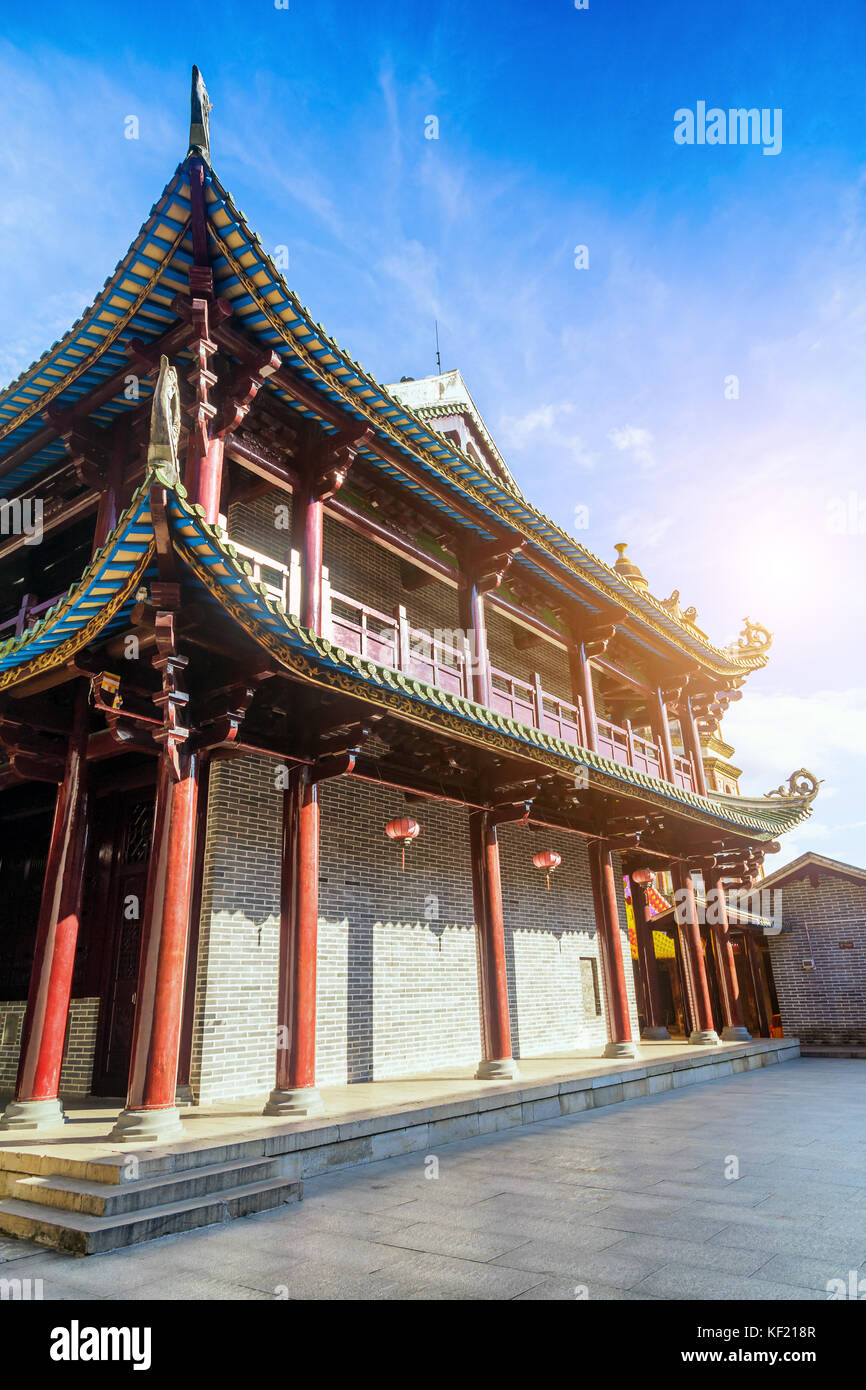
Shaoguan Nanhua Temple.
Tickets: Prices, Booking, and Tips
Visiting the Shaoguan Nanhua Temple is a rewarding experience, where tranquility meets the rich history of Zen Buddhism. Here’s everything you need to know about ticket prices, booking, and tips to make your visit seamless and enjoyable.
Ticket Prices
Entrance to Nanhua Temple is quite affordable, with tickets priced around CNY 20 per person. This nominal fee grants you access to the temple grounds and its magnificent architectural wonders, including the revered Mahavira Hall where you can marvel at the stunning golden Buddha statues.
Booking Information
No advance booking is necessary for individual visitors. You can simply purchase your ticket at the entrance upon arrival. However, if you plan to visit with a larger group, it might be a good idea to contact the temple management in advance to inquire about any group rates or special arrangements.
Best Time to Visit
The temple is open daily from 7:30 AM to 5:30 PM, making it convenient for early risers and those who prefer to visit later in the day. To avoid crowds, consider visiting on weekdays and arriving early in the morning.
Getting There
Nanhua Temple is located about 7 km east of Maba Town in the Qujiang District of Shaoguan. The easiest way to reach the temple is by taxi, which should cost around CNY 200 for a round trip from Shaoguan city. Keep in mind that while there are taxis available, it’s wise to confirm your return transportation, especially during peak visiting hours when taxis may be scarce.
Tips for Your Visit
- Dress Respectfully: As a place of worship, it’s important to dress modestly. Comfortable shoes are also recommended, as you’ll be exploring a large area with various steps and paths.
- Prepare for a Spiritual Experience: Engage with the serene environment by taking time to reflect or meditate. The temple’s peaceful atmosphere is perfect for personal contemplation.
- Stay Hydrated and Snack Smart: While there may be limited dining options nearby, pack some water and light snacks to keep you energized during your visit.
- Respect Local Customs: Familiarize yourself with basic Buddhist customs, such as bowing before entering halls or lighting joss sticks, to enhance your experience and show respect.
By keeping these tips in mind, your visit to Nanhua Temple will be enriching and memorable. Enjoy the spiritual ambiance and the stunning architecture of this historic temple!
How to Get There: A Complete Transportation Guide
Reaching the Nanhua Temple in Shaoguan is a journey that combines the beauty of travel with the serenity of one of China’s most revered Buddhist sites. Here’s a comprehensive guide to help you navigate your way there, ensuring a smooth and enjoyable visit.
Getting to Shaoguan
By Air
The nearest major airport to Shaoguan is Guangzhou Baiyun International Airport (CAN), located approximately 140 kilometers (87 miles) from the city. From the airport, you can take a direct high-speed train or opt for a taxi which may take around 2 to 2.5 hours, depending on traffic.
By Train
Shaoguan is well-connected by rail, and the Shaoguan Railway Station services high-speed trains from major cities, including Guangzhou, Shenzhen, and Hong Kong. The travel time from Guangzhou to Shaoguan is about 1.5 hours by high-speed train. Once you arrive at Shaoguan Railway Station, you’re just a short taxi ride away from the temple.
From Shaoguan to Nanhua Temple
By Taxi
The most convenient way to reach Nanhua Temple is by taxi. It’s approximately a 30-minute drive (around 20 kilometers/12 miles) from Shaoguan city center or the railway station. Expect to pay around ¥60-¥100 for the fare, depending on traffic and your exact starting point. Taxis are readily available, and you can also use ride-hailing apps like Didi if you prefer.
By Public Bus
For a more economical option, you can take a bus to the temple. Buses to Nanhua Temple depart from Shaoguan’s main bus station. The journey takes about 1 hour, and the fare is quite budget-friendly, typically around ¥10. Be sure to check the bus schedule ahead of time, as services may vary.
Tips for Your Visit
- Entrance Fee: The entrance fee to Nanhua Temple is approximately ¥20, which includes a small bundle of joss sticks to burn at the entrance.
- Operating Hours: The temple is open daily from 7:30 AM to 5:30 PM, so plan your visit accordingly to make the most of your time there.
- Language: While some signage in the temple may not be in English, the serene atmosphere and the beauty of the architecture speak for themselves. However, it’s helpful to download a translation app or carry a phrasebook for communication.
- What to Expect: The temple complex is large and includes beautiful courtyards, ancient trees, and stunning architectural features like the Mahavira Hall. Allocate a few hours to explore fully.
Conclusion
Visiting Nanhua Temple is not just about the destination; it’s a journey into China’s rich cultural and spiritual heritage. Whether traveling by taxi or public transport, the experience of reaching this tranquil sanctuary is sure to be memorable. Enjoy your visit to this remarkable site, and take a moment to appreciate the peaceful surroundings and the history that envelops you. Safe travels!
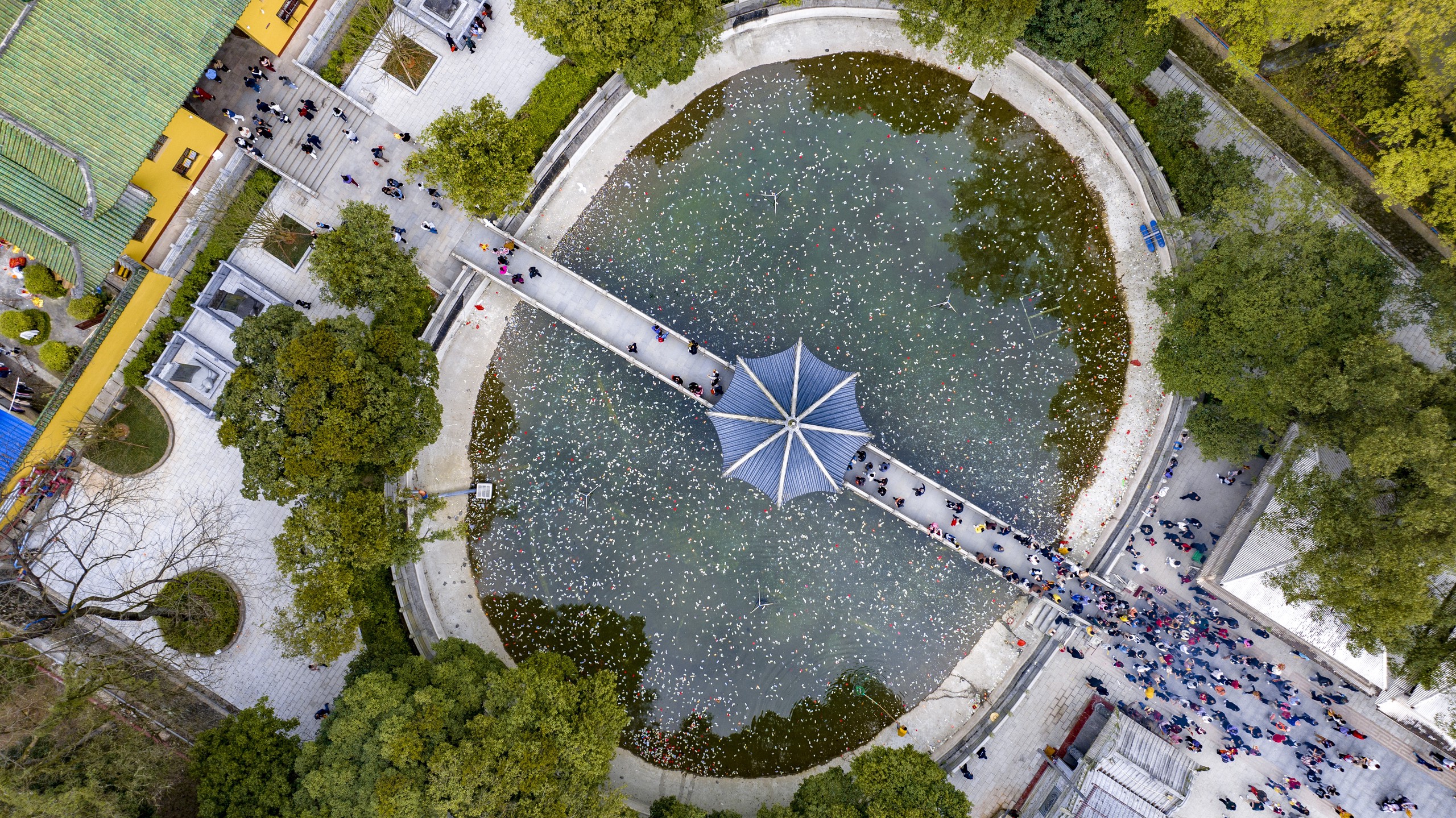
Shaoguan Nanhua Temple.
Local Cuisine and Accommodation Nearby
When visiting the serene Nanhua Temple in Shaoguan, indulging in local cuisine and finding a comfortable place to stay can enhance your experience significantly. Here are some delightful options nearby that cater to international travelers.
Local Cuisine
While the temple itself offers a vegetarian dining option, exploring the local culinary scene can be a rewarding experience. Here are a couple of nearby restaurants worth trying:
-
Mo Fei CoffeeBreak (摩菲咖啡): Just a short 2.5-mile drive from the temple, this charming café serves a variety of coffee and light meals. It’s an ideal spot to relax and refresh after a day of exploration. The ambiance is cozy, making it a perfect place for a break.
-
Local Country Restaurants: Scattered throughout the nearby villages, these establishments offer authentic regional dishes. You can expect to find flavorful local specialties, such as roasted meats, dumplings, and fresh vegetables. These restaurants often have a homely feel, providing a taste of the local lifestyle.
Accommodation Options
Finding a comfortable place to stay near Nanhua Temple is essential for a restful visit. Here are some recommendations:
-
Shaoguan International Hotel: Located about 7 miles from the temple, this hotel offers modern amenities and comfortable rooms. With a restaurant on-site serving both local and international cuisine, it’s a convenient choice for travelers looking for comfort and accessibility.
-
Nanhua Temple Accommodation: For a unique experience, consider staying at the temple’s own accommodation facilities. While basic, it provides a tranquil atmosphere for those looking to immerse themselves in the spiritual essence of the site. It’s ideal for early risers wishing to enjoy the temple grounds before the crowds arrive.
-
Local Guesthouses: There are several guesthouses in the vicinity offering a more personalized experience. These often feature traditional decor and the chance to interact with local families, providing a deeper insight into the culture and lifestyle of the area.
Tips for Your Visit
-
Explore Local Markets: If you have time, visit local markets where you can sample street food and purchase regional snacks, such as rice cakes and pickled vegetables.
-
Vegetarian Options: As Nanhua Temple is a significant site for Zen Buddhism, vegetarianism is prevalent in the area. Look for restaurants that emphasize vegetarian dishes to enjoy meals that align with the local culture.
By combining a visit to the tranquil Nanhua Temple with culinary delights and comfortable accommodations, you can create a memorable experience that captures the essence of this spiritual sanctuary and its surroundings.
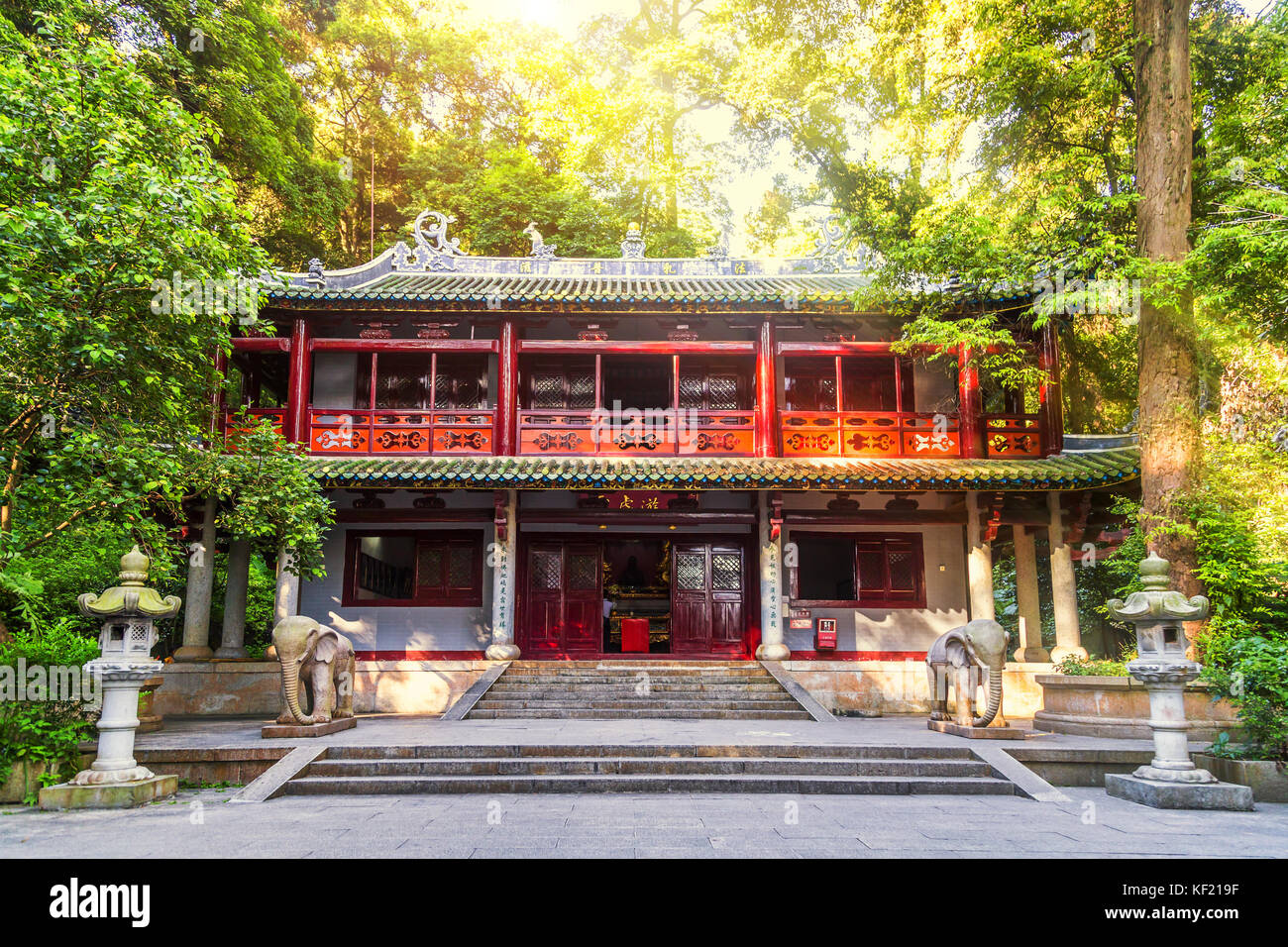
Shaoguan Nanhua Temple.
Frequently Asked Questions
Frequently Asked Questions about Shaoguan Nanhua Temple
-
What are the opening hours of Nanhua Temple?
Nanhua Temple is open daily from 7:30 AM to 5:30 PM. Plan your visit accordingly to make the most of your time in this tranquil setting. -
Is there an entrance fee to visit the temple?
Yes, the entrance fee is approximately ¥20 per person. This fee includes a small bundle of joss sticks, which you can burn at the entrance as part of the temple’s rituals. -
How do I get to Nanhua Temple from Shaoguan city center?
You can take a taxi from Shaoguan city center, which typically costs around ¥200 for a round trip. Alternatively, consider hiring a private car for the day if you’re traveling with a group. -
What should I wear when visiting the temple?
Dress modestly and respectfully, as Nanhua Temple is a sacred site. Comfortable shoes are advisable since there may be a lot of walking and steps to navigate. -
Are there any dining options available near the temple?
While there are limited dining options within the temple grounds, a vegetarian Buddhist restaurant is available. For more variety, there are countryside restaurants in nearby villages. -
Can I take photographs inside the temple?
Photography is generally allowed in the temple grounds, but be respectful of worshippers and sacred spaces. Always check for any specific restrictions at different areas within the temple. -
Is English signage available for non-Chinese speakers?
While there are some English descriptions available, they might be limited. It’s advisable to bring a guidebook or download a translation app for a better understanding of the temple’s history and significance. -
What are the main highlights of Nanhua Temple?
Key attractions include the majestic Mahavira Hall with its stunning golden Buddha statues, the serene courtyards, ancient trees, and the historical relics associated with Zen Master Hui Neng, the sixth patriarch of Zen Buddhism. Each corner of the temple offers a unique glimpse into its rich history and spiritual importance.
Final Thoughts on Your Trip
As your journey through the tranquil grounds of Nanhua Temple comes to an end, take a moment to reflect on the profound sense of peace and spiritual richness that this sacred site offers. Nestled along the serene Caoxi River, this architectural gem stands as a testament to centuries of Buddhist tradition and Zen philosophy.
The intricate designs of the temple, combined with the lush greenery and gentle sounds of nature, create an ambiance that invites introspection and meditation. Whether you are a devout practitioner, a history enthusiast, or simply a curious traveler, Nanhua Temple has a unique way of speaking to the soul, leaving you with memories that linger long after your visit.
As you depart, consider the teachings of the great masters who walked these halls and the serene moments you embraced within its sacred spaces. Carry a piece of this sanctuary with you, allowing the tranquility of Nanhua Temple to inspire your journey ahead. Safe travels, and may your path be filled with peace and enlightenment.